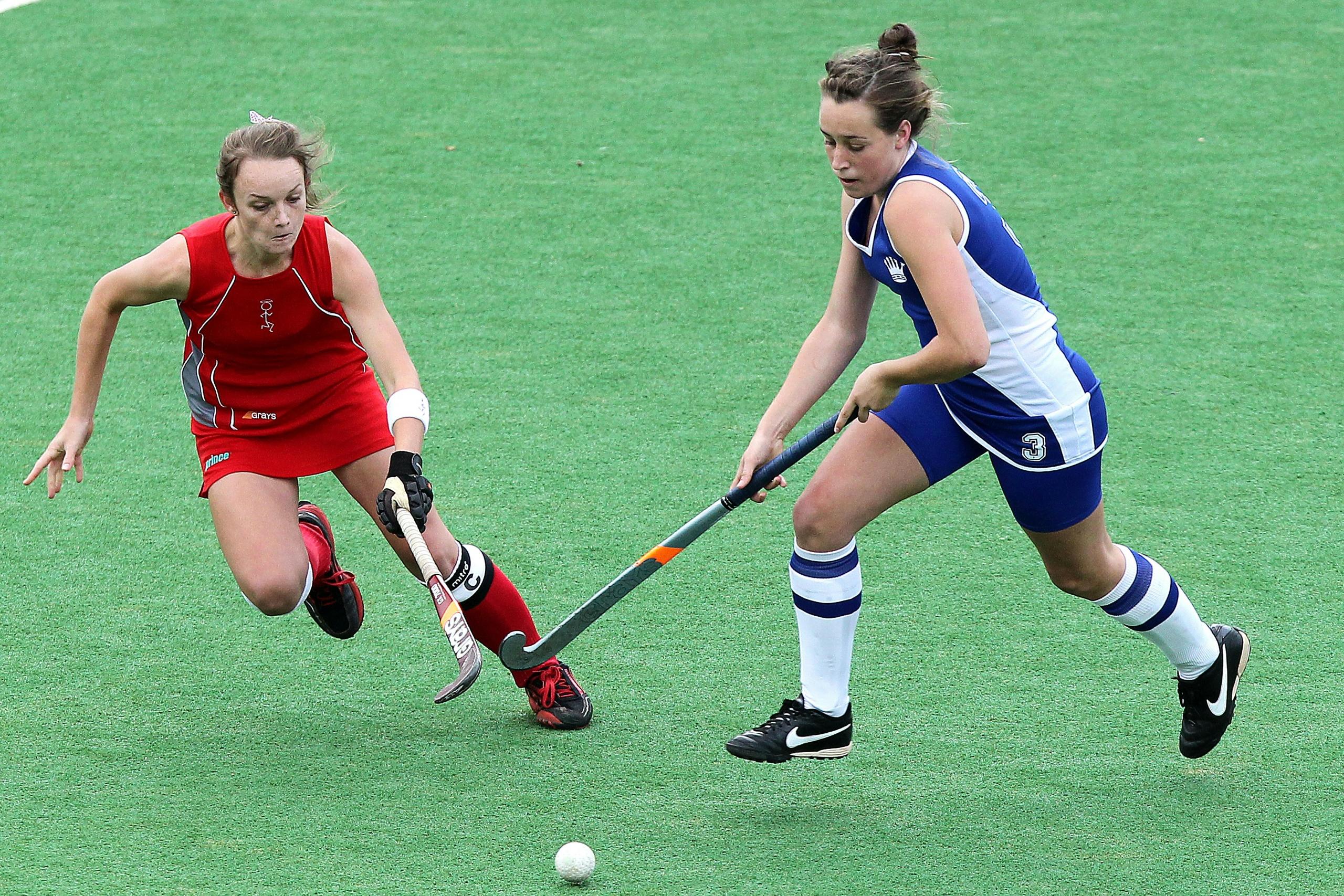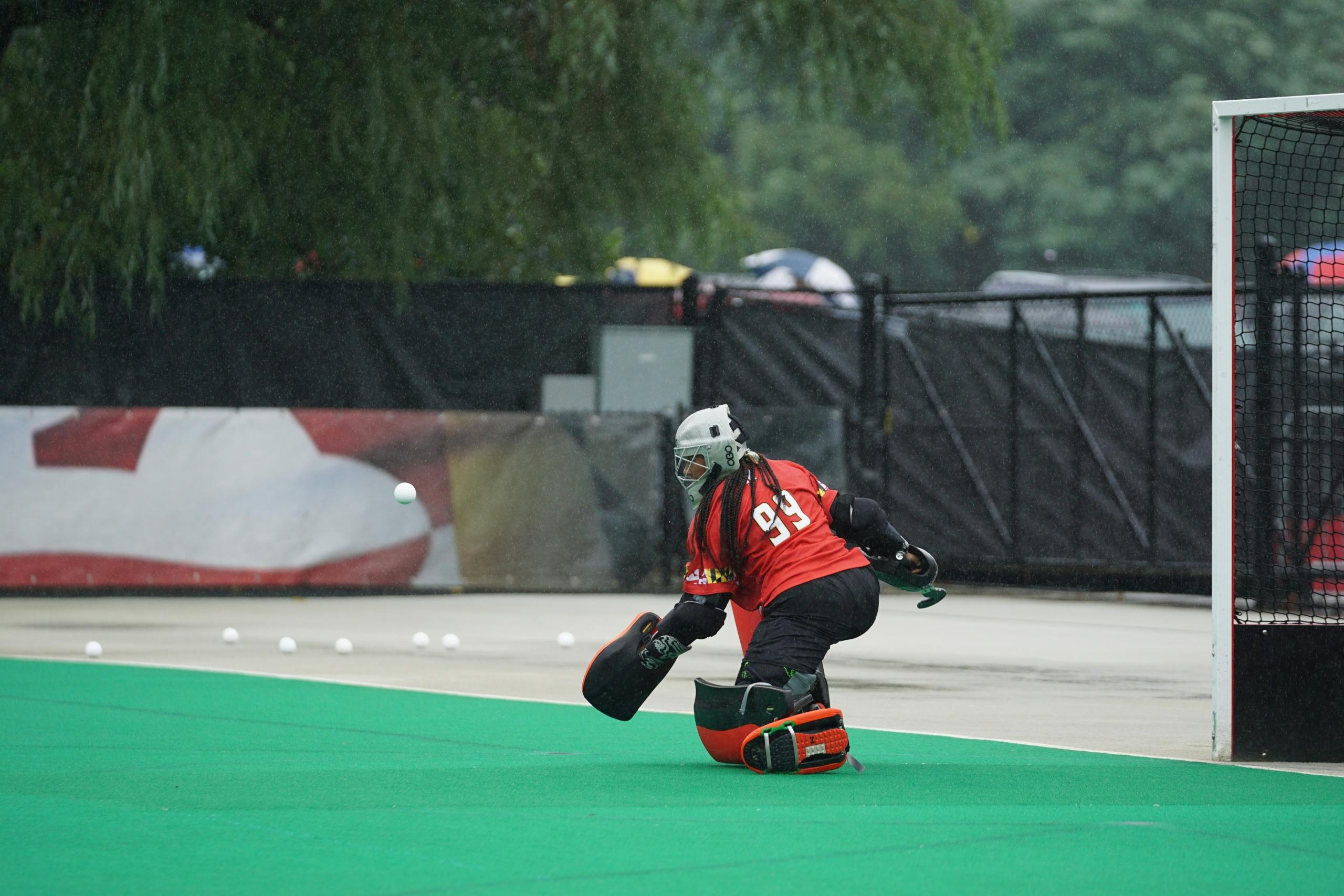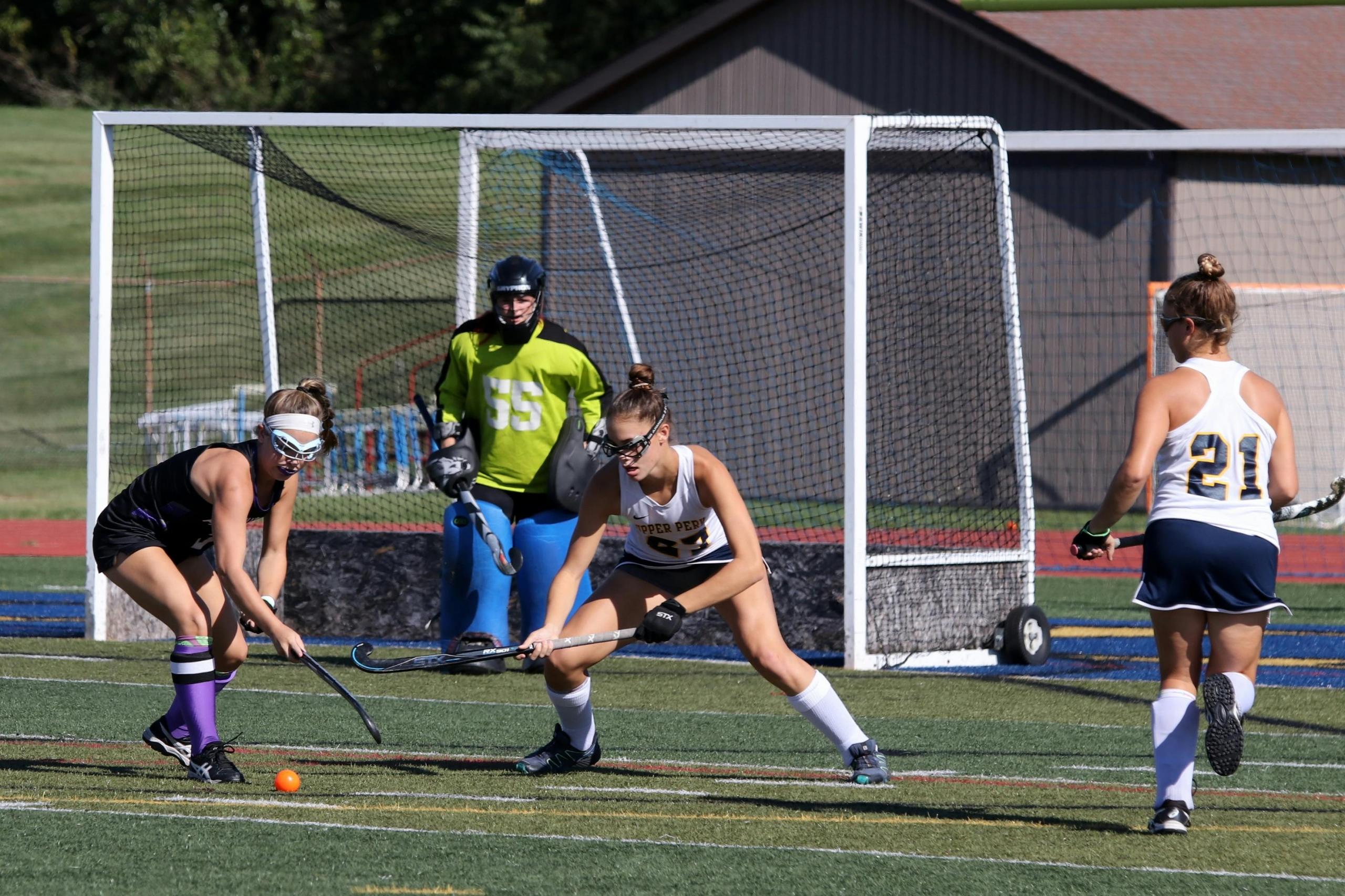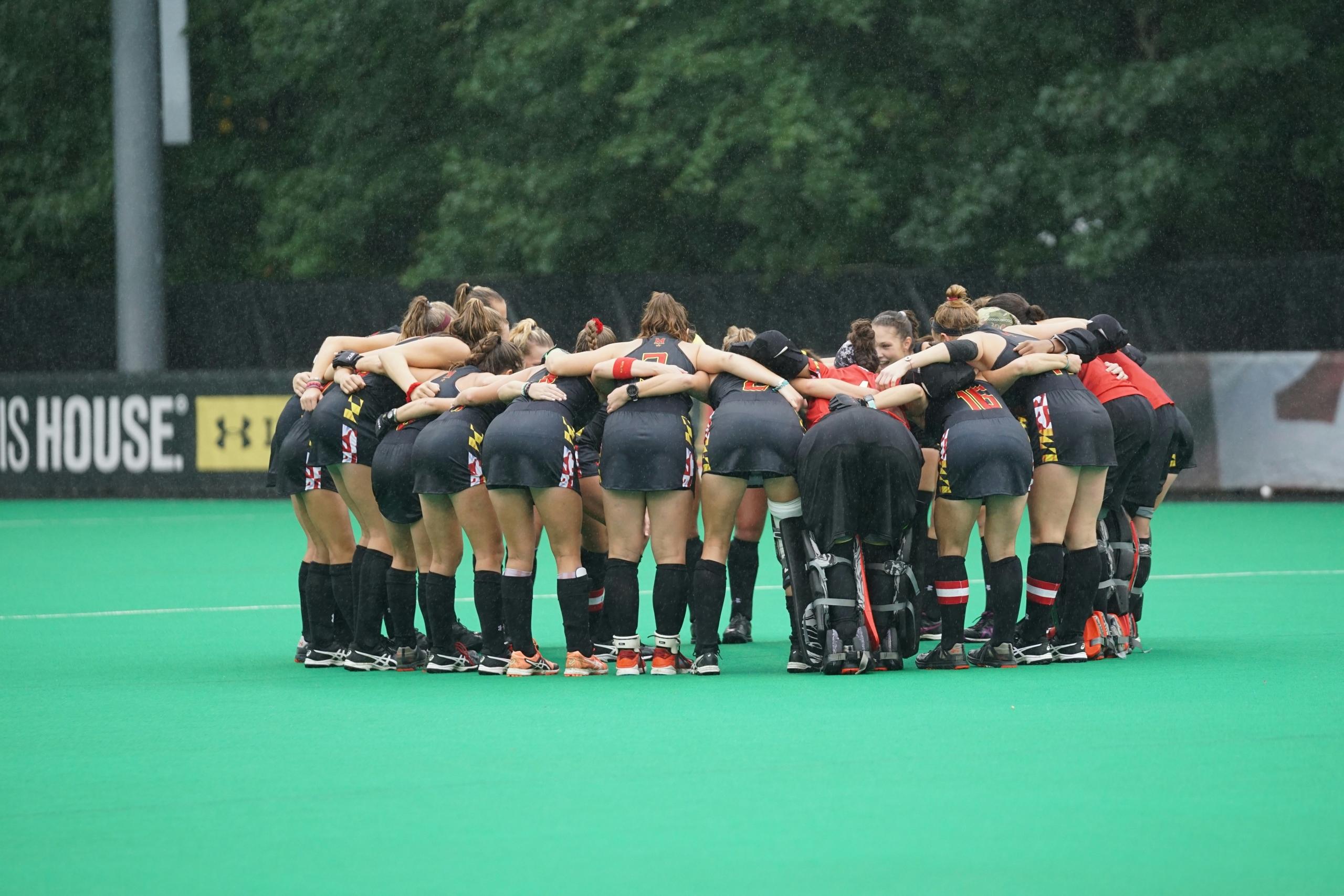Field hockey holds a special place in South Africa's sporting culture, and it has captivated enthusiasts across the nation since the early 20th century. The game's accessibility contributes significantly to its popularity.
Firstly, it can be played with minimal equipment and is adaptable enough to be played on different surfaces. In addition, hockey is played by men and women and players from all backgrounds.
The competitive spirit surrounding field hockey is palpable, with South African teams consistently performing well on the international stage to inspire a new generation of players and fans alike. Furthermore, among the many reasons to try hockey, it serves as a unifying force to bring communities together and promote camaraderie and sportsmanship.
So, why is it good to play hockey?
These reasons are just the start. To find out more benefits of playing hockey for beginners, keep reading.

Why is it Good to Play Hockey?
Playing field hockey offers a multitude of non-physical benefits that contribute to personal development and overall well-being. One of the many reasons to try hockey is the enhancement of hand-eye coordination.
The fast-paced nature of field hockey means that reactions and stick handling need to be precise and quick. In fact, the constant engagement of hand-eye coordination not only improves performance on the field but also translates to enhanced dexterity and agility in everyday tasks.
In addition, field hockey increases logical thinking and strategic planning because players have to anticipate their opponent's moves, analyse the flow of the game, and make split-second decisions to outmanoeuvre the opposition. This strategic aspect encourages critical thinking and problem-solving skills, as players learn to adapt their tactics based on evolving game situations.

These cognitive abilities cultivated on the field are just some of the advantages of playing hockey that can be applied to various aspects of life.
Furthermore, field hockey relies on teamwork and collaboration which is one of the most important benefits of hockey.
Which hockey position suits you best?
Why is it Good to Play Hockey for Developing Social Skills?
One of the greatest advantages of playing hockey is to instil valuable interpersonal skills. The reason for this is that success in hockey relies on effective communication, trust, and a high level of cooperation among teammates.
Players learn to work together towards a common goal while supporting and relying on each other to achieve victory. This sense of camaraderie is one of the greatest benefits of playing hockey. Not only does a position in a team establish a sense of personal belonging, but it also creates strong bonds and mutual respect among team members. Teamwork is something that everyone should learn and it is one of the many reasons to try hockey. Teamwork teaches important lessons in leadership, cooperation, and empathy. Beyond the field, these skills are transferable to school, work, and social settings and can help to improve interpersonal relationships and create a sense of community.
So, besides coordination, logical thinking and teamwork, what about the obvious, physical advantages of playing hockey?
Do you understand the rules of hockey?
What are the Physical Benefits of Playing Hockey?
In answering the question - why is it good to play hockey - the physical benefits are probably the most obvious. There’s no doubt that the health reasons to try hockey are numerous which makes it an excellent sport for improving overall health and fitness. From cardiovascular endurance to muscular strength, the physical advantages of playing hockey can be briefly outlined as follows:

- Cardiovascular Endurance: Field hockey is a fast-paced sport that requires continuous movement and high levels of aerobic endurance. Players constantly run, sprint, and manoeuvre their bodies across the field, which helps to elevate heart rate and improve cardiovascular health. Regular participation in field hockey can lead to increased stamina and endurance while enhancing the body's ability to sustain physical activity for extended periods.
- Muscular Strength and Endurance: Field hockey involves a combination of running, passing, shooting, and defensive manoeuvres, all of which engage various muscle groups throughout the body. The repetitive nature of these movements helps to develop muscular strength and endurance, particularly in the legs, core, arms, and shoulders. Stronger muscles not only improve athletic performance but can also reduce the risk of injury and enhance overall functional fitness.
- Agility and Speed: Agility and speed are essential components of successful field hockey gameplay. Think about it – players need to quickly change direction as well as accelerate and decelerate to evade their opponents and navigate the field effectively. The dynamic nature of the sport challenges agility and speed and leads to improvements in coordination, reaction time, and overall athleticism.
- Flexibility and Range of Motion: During play, field hockey requires players to perform a wide range of movements, including stretching, lunging, and reaching. These movements promote flexibility and joint mobility, helping to maintain or improve the range of motion in key areas such as the hips, shoulders, and spine. Always remember that enhanced flexibility not only reduces the risk of injury but also contributes to better overall movement in all areas of life.
- Balance and Coordination: Moving while dribbling, passing, or shooting a ball requires excellent coordination and balance. Field hockey drills and games challenge players to develop these skills while developing good awareness about body position and neuromuscular control. In short, having improved balance and coordination means better stability, control, and agility on the field.
So, if you are looking for reasons to try hockey, the physical benefits alone should be enough to motivate you. From cardiovascular endurance to muscular strength, agility, flexibility, balance, and coordination, the sport provides a well-rounded approach to improving overall health and athleticism. Whether you're sprinting down the field or defending your goal, there’s no doubt, that the numerous physical benefits of playing hockey contribute to a healthier, fitter and more resilient body.
Reach out to a private hockey coach to learn more.
The Ideal Hockey Training Session
The ideal field hockey training session is a well-structured and dynamic practice that maximises player development while balancing physical conditioning and skill refinement. While hockey is usually played in winter in South Africa, a typical pre-season, regular season, or off-season session lasts from at least an hour for beginners to up to two hours for advanced players. This allows enough time for warming up, drills, skill work, and cooling down.
Here's a more in-depth breakdown of what an ideal field hockey training session could entail:

- Warm-up (15 minutes): The session begins with a thorough warm-up to prepare the body for physical activity and reduce the risk of injury. This includes dynamic stretches, light jogging, and mobility exercises to increase heart rate, improve circulation, and loosen muscles and joints.
- Skill Development (30 minutes): The bulk of the session focuses on skill development, with drills and exercises tailored to specific aspects of the game. Players work on fundamental skills such as dribbling, passing, receiving, shooting, and defensive techniques. Coaches provide feedback and guidance to help players refine their technique and improve their proficiency.
- Tactical Training (20 minutes): Following skill work, the session transitions to tactical training, where players learn and practice team strategies, offensive and defensive formations, and situational awareness. This may involve small-sided games, tactical drills, and scrimmage scenarios designed to reinforce game concepts and decision-making under pressure.
- Physical Conditioning (20 minutes): Integrating physical conditioning into the session helps improve overall fitness and athleticism. This may include interval training, speed and agility drills, plyometrics, and strength exercises tailored to the demands of the game. Emphasis is placed on building endurance, speed, power, and agility to enhance on-field performance.
- Cool-down and Reflection (15 minutes): The session usually concludes with a cooldown period to gradually lower the heart rate and prevent muscle soreness. Here, players engage in static stretches, foam rolling, and relaxation techniques to promote recovery and flexibility. In addition, coaches may facilitate a brief reflection period to discuss key takeaways from the session and set goals for future improvement.
Ultimately, a typical hockey training session offers numerous physical and non-physical benefits. Physically, players improve cardiovascular fitness, muscular strength, endurance, agility, speed, flexibility, and balance. But this is not all, if you still need convincing about why is it good to play hockey, the non-physical benefits gleaned from a typical training session include enhanced teamwork, communication, leadership, decision-making, and resilience.
Overall, an effective training session not only develops individual skills but also creates a cohesive team dynamic and a passion for the sport that can positively impact every area of one’s life.















